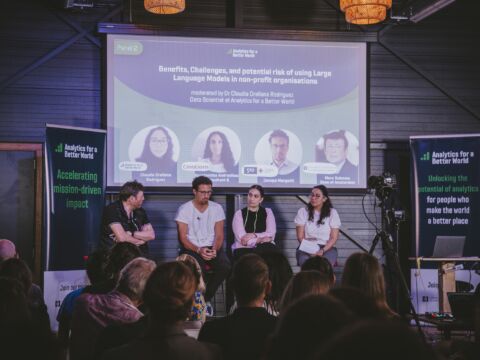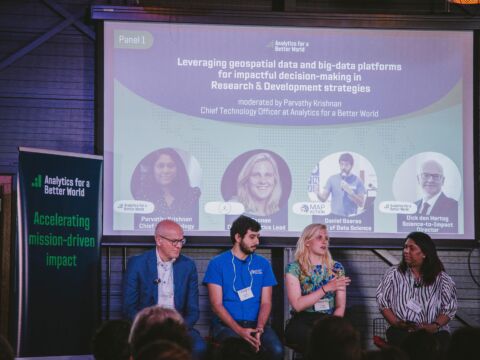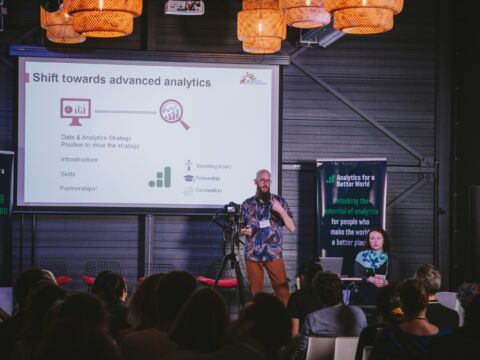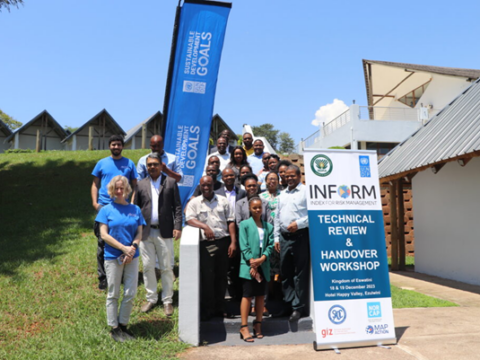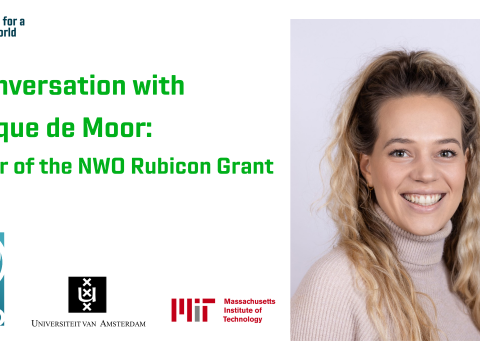ORTEC
See profileThe Ocean Cleanup
See profileAdvanced technologies to rid the oceans of plastic | The Ocean Cleanup
October 2023

Every year, millions of tons of plastic enter the oceans. This pervasive pollution poses significant global environmental, economic, and health challenges. The economic damage amounts to an estimated 13 to 14 billion dollars a year. If no action is taken, plastic will increasingly impact our ecosystems, health, and economies. “It’s The Ocean Cleanup’s mission to eliminate 90% of plastics floating in the oceans by 2040,” says Arjen Tjallema, Head of Technology at The Ocean Cleanup. To reach their goal by 2040, The Ocean Cleanup focuses on two key areas: cleaning up legacy pollution and preventing future inflow.
We have all seen the tremendous value of data analytics on the success of commercial organizations. Now, how about humanitarian and societal challenges? As one of the founders of the Analytics for a Better World Institute, ORTEC believes that analytics can also contribute to solving major challenges facing humanity – from hunger to deforestation and the extinction of flora and fauna, among others. For this edition from our ‘Jointly for Social Impact’ series, we sat down with The Ocean Cleanup, a nonprofit organization, to hear from them how they develop and scale technologies to rid the oceans of plastic.
___
Jointly for Social Impact
This article is part of the ‘Jointly for social impact’ series. Every article highlights another impact story based on collaborations and partnerships with Analytics for a Better World – an institute co-founded by ORTEC.
About the Ocean Cleanup
The Ocean Cleanup is a nonprofit organization that develops and deploys advanced technology to rid the oceans of plastic, collecting data and using analytics to minimize the cost of cleanups. As Arjen Tjallema, Head of Technology explains, they do this by targeting plastic hotspots and using vessels as efficiently as possible, considering operational limits.
📷 All photos in this article are from the Ocean Cleanup
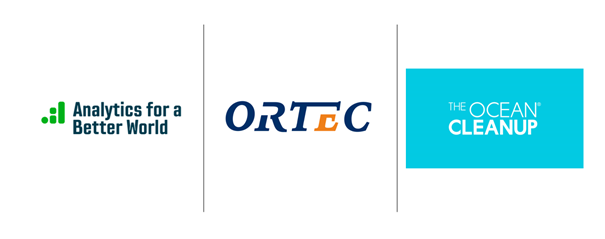
Oceans full of plastic
Every year, millions of tons of plastic enter the oceans. This pervasive pollution poses significant global environmental, economic, and health challenges. The economic damage amounts to an estimated 13 to 14 billion dollars a year. If no action is taken, plastic will increasingly impact our ecosystems, health, and economies. “It’s The Ocean Cleanup’s mission to eliminate 90% of plastics floating in the oceans by 2040,” says Arjen Tjallema, Head of Technology at The Ocean Cleanup. To reach their goal by 2040, The Ocean Cleanup focuses on two key areas: cleaning up legacy pollution and preventing future inflow.
We aim to clean up 90% of floating ocean plastic by 2040
Arjen Tjallema, Head of Technology at The Ocean Cleanup

Starting to collect data
When The Ocean Cleanup was founded ten years ago, when there was relatively little usable scientific data: “We knew plastic pollution was a problem, but we didn’t know how big of a problem it was, what kind of plastics were floating in the oceans, where it was coming from, or how it behaved,” says Arjen Tjallema. In 2015, they embarked on a data collection project – The Mega Expedition – to gather comprehensive data in the North Pacific Region, known as the Great Pacific Garbage Patch. The expedition mapped an area measuring 3.5 million square kilometers and collected more data on oceanic plastic than had been collected in the past 40 years combined. The expedition helped to fully understand the plastic pollution problem – and ultimately being able to clean it up.
In 2016, the Aerial Expedition started. The objective of the mission was to accurately measure the biggest and most harmful debris in the ocean. It was the first-ever aerial survey of an ocean garbage patch and covered a larger area than the Mega Expedition. The data revealed an alarming estimate of 100,000 kilograms of scattered plastics floating around in an area three times the size of France.
Creating value from waste
Since the beginning of The Ocean Cleanup, they have always planned to do something valuable with the plastic they clean up: either by creating durable new products or processing it otherwise. By giving ocean plastic a new purpose, they can turn the problem into a solution, and the funds they manage to raise this way will always directly go into further cleanups. An example are the Ocean Cleanup sunglasses that were launched at the end of 2020 – now completely out of stock – they were made from plastic they removed from the Great Pacific Garbage Patch in 2019.
There is no such thing as waste – only wasted resources. When you can create value from waste, it isn’t waste anymore.
John Verhoeven, Recycling Manager
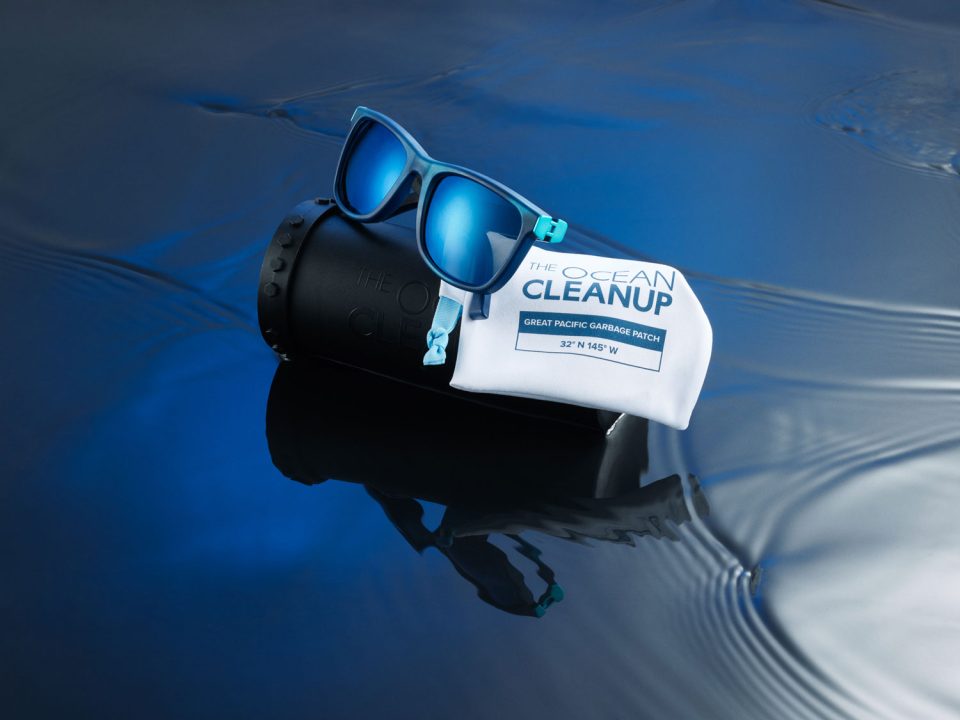
Efficient fleet operations
Together with Analytics for a Better World, The Ocean Cleanup is looking into its fleet operations. Arjen Tjallema explains: “The ships we use have a variety of tasks. The most important one is towing the system. Other things that must be done: extracting the plastics, inspection, repair and maintenance, and plastics logistics. Until now, we have been doing all these steps with two similar vessels. Now, we are exploring the use of alternative vessels, and maybe even the use of specific vessels for specific tasks. We are trying to find the most cost-efficient and sustainable procedure. The Analytics for a Better World supports us in this by making an integrated model of the operations that simulates the effect on costs for different scenarios for future operations, while incorporating our operational limitations. It’s helping us make strategic decisions for scaling up the operation.”
We intend to remove plastics at minimal cost – not only financially, but also in terms of emissions and fish bycatch.

Proven technology
Quite a range of models are used to optimize The Ocean Cleanup’s day-to-day routine, Tjallema explains. “Currently, ‘System 002’ – or as we say, Jenny – operates in the Great Pacific Garbage Patch and has removed over 200,000 kg of plastic debris. We are modeling what’s happening in the ocean, the plastic behavior, the effects of the cleanup on the garbage patch, and how the system and the plastic are interacting. The circulating currents in the garbage patch move the plastic around, creating natural ever-shifting hotspots of higher concentration. Using computational modeling, we predict where the hotspots are and place the cleanup systems in these areas. The steering strategy is also based on these models, finding the optimal route through the Great Pacific Garbage Patch. It looks seven days ahead, considers the density of plastics, and includes practical considerations like making U-turns. This already turns out to be very promising: a 1.5 times higher encountered density, driving our cost down by a factor of 1.5. We intend to remove plastics at minimal cost – not only financially, but also in terms of emissions and fish bycatch.”
At the heart of the supply chain
At the heart of this supply chain is the development and deployment of advanced technologies, such as the Interceptor and System 002, designed to efficiently collect and remove plastic debris from the seas. The organization collaborates with a global network of partners: from engineers and scientists to logistics experts, to ensure the seamless procurement, manufacturing, and transportation of its equipment and materials. The Ocean Cleanup places a strong emphasis on sustainability throughout its supply chain, prioritizing eco-friendly sourcing, energy-efficient production, and responsible disposal practices to minimize its own environmental footprint while working tirelessly to address one of the planet’s most pressing environmental challenges.
A special thanks to Baizhi Song and Jean Pauphilet (London Business School) and to the ORTEC team: Marijke Lijzenga, Guusje Scheijen, Jelke van Hoorn and Iris van Beuzekom.

